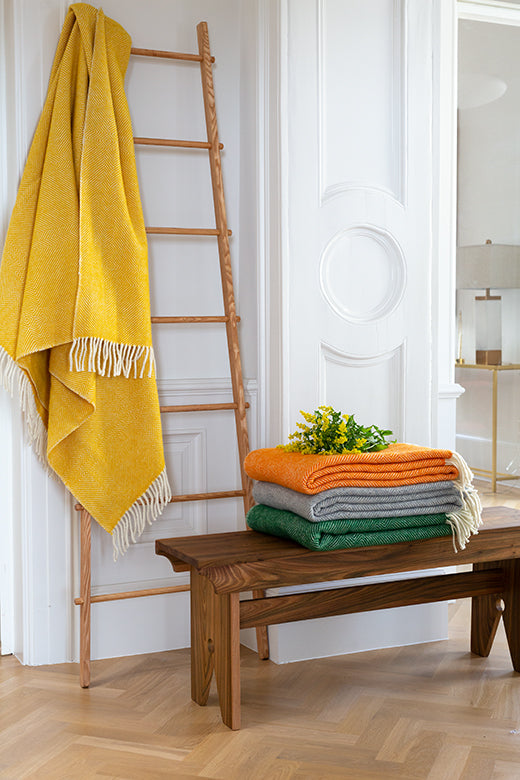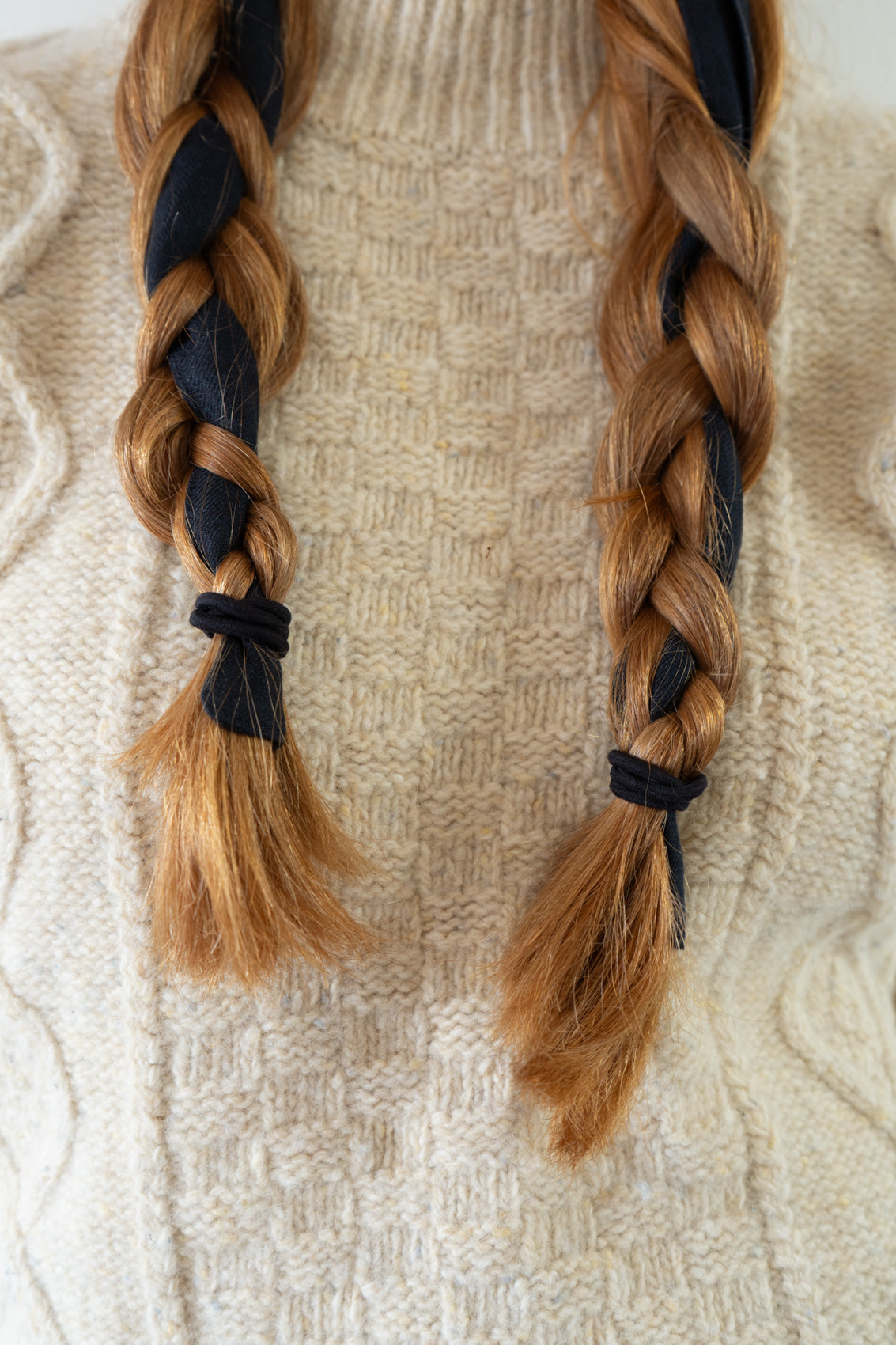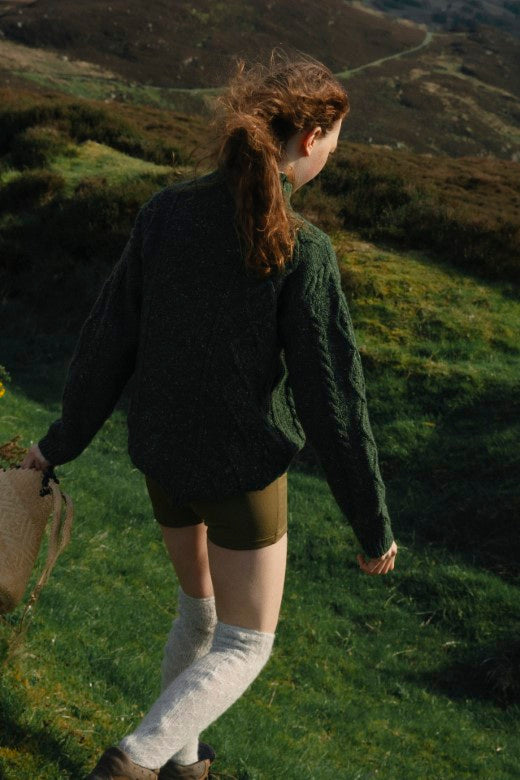Accessories for Home
Accessories to Wear
Women / Men
Lookbooks
The Irish Tricolour

Flown Worldwide with Price
Living Collection
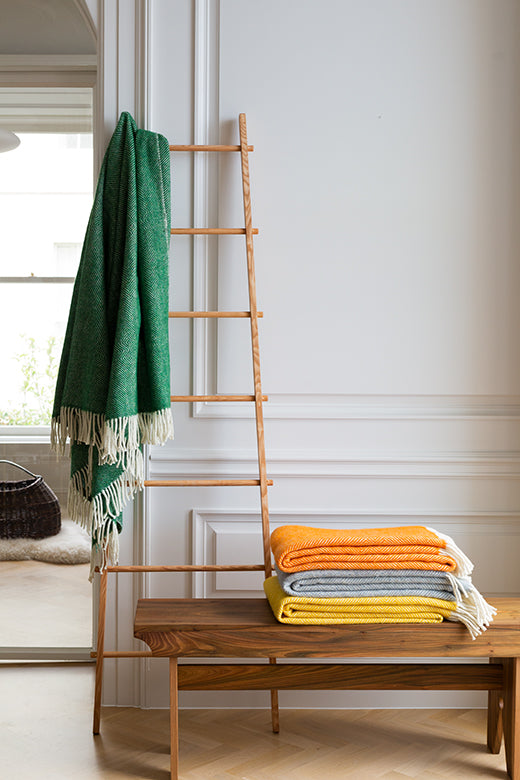
Irish Luxury at Home
STABLE Celebrates
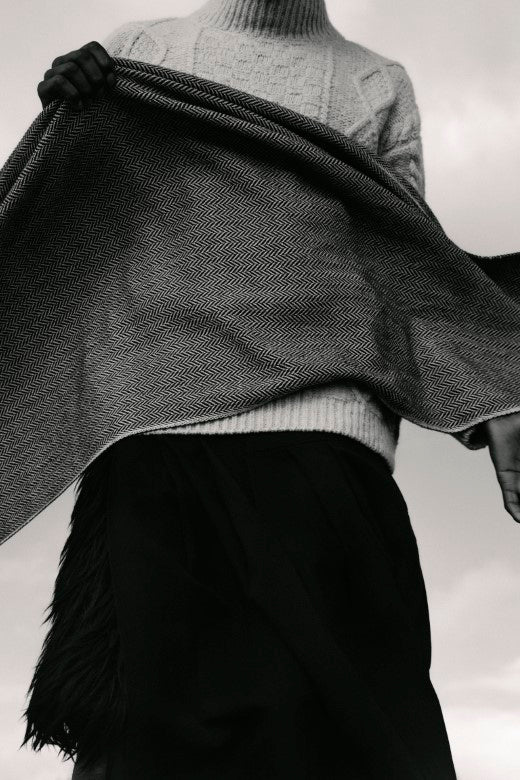
Irish Design Celebrated
The Donegal Aran
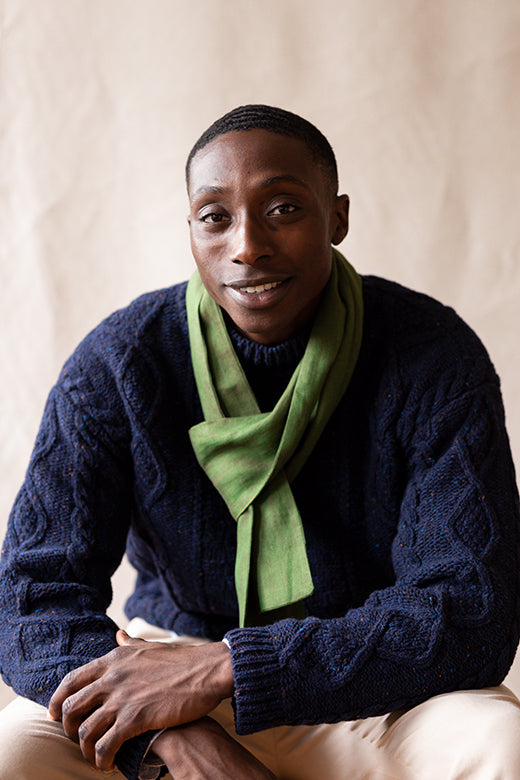
Iconic Irish Garmant
Our Story
Journal
Subheading
All About: Irish Yarn Spinning
Did you know there are only four companies still spinning yarn commercially in Ireland? So due to the greater awareness and interest in buying local, sustainable and natural Irish linens and wools, Ireland's four highly dedicated yarn spinners are kept super busy.
Wool is supplied in its natural state as fibres, which are then carded and teased into threads. The threads are spun together and twisted to form yarns of different ply. Two shreds twisted together is 2-ply and three is 3-ply and so on – the higher the ply the thicker the yarn. 
But before it’s ready to be spun the wool has to be prepared. Because a sheep’s fleece is made up of different textures and qualities, these must be carefully sorted before spinning can begin. The fleece also has to be washed and dried, at which stage briars, burrs and other debris are removed and a greasing agent is added to lubricate the fibres. The spinner will then typically comb or ‘card’ the wool to get rid of any tangles – this also encourages the fibres to lie side by side and makes for easier weaving.
A medium coarseness is ideal for spinning as the fibres are naturally clingy, making spinning that little bit easier. In Ireland, our hand-spinners use wool from a variety of breeds including Jacob, Shetland, Clun Forest, Zwartbles, Galway and even Blackface (the most common sheep breed in Ireland).

Hand-spinning is also extremely laborious. Even the most experienced spinners could spin for a whole day and end up with only 200–300 g of yarn, making the craft a real labour of love. People used to say that it sixteen spinners to keep one weaver going!
The spinning community in Ireland is a tightly knit one. And if there’s one name known to everyone that would be Johnny Shiels. A third-generation spinning-wheel maker, Johnny predominantly makes Dutch-style wheels, which were introduced to Ireland in the eighteenth century and used for spinning flax. Never mind the long spinning process – to make the spinning wheel itself takes approximately 50 hours – which seems like a long time until you take into account the number of small, intricate parts such as the flyer, bobbin and spindle.
The Shiels family have been making spinning wheels in the Inishowen Peninsula in Donegal since the mid-twentieth century. During World War Two, in particular, there was quite a boom in demand for spinning wheels due to the shortage of shop-bought yarn, with some spinning studios in Donegal working up to forty-five wheels at once. The demand for spinning wheels completely dried out after the war and well into the 1950s, but the craft saw a revival in the late 1960s and has been growing steadily since then. Carding and spinning is wonderful to watch and the machinery used is more often than not over a hundred years old. In many of our STABLE Irish blankets, throws and scarves you’ll find Donegal yarns, which have a distinctive fleck added into the threads – a look for which Donegal weaving is famous the world over.
Drop in to us at STABLE of Ireland at the Westbury Mall in Dublin next time you’re passing Grafton Street and we can show you many fine examples of our textiles.
Suggested articles
What's next?
Get the first look at exclusives by Ireland's best weavers and makers in Irish design, Irish linen, Irish crafts and Irish gifts.
